Intel 8th Generation and 9th Generation Processor Lists Leaked: Coffee Lake Refresh?
by Ian Cutress on November 24, 2017 7:45 AM EST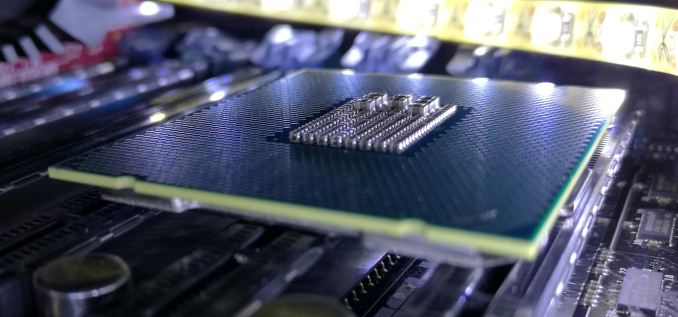
Officially, Intel does not comment on unreleased products, which often has the knock-on effect that processors aren’t actually known about until the day they appear on shelves. In order to find information early (in order to prepare for launches), it comes down to software and retailers to expose the details, either accidentally or on purpose. From a couple of sources today, we now have a full list of Intel’s 8th Generation processor stack, which is expected to launch during the first half of 2018, as well as some elements of Intel’s next 9th generation products.
We have already had six processors from Intel’s desktop 8th Generation launch, called Coffee Lake, and a quartet of 8th generation notebook Kaby Lake refresh processors also launched. These are both called 8th generation, which can be confusing. Historically, Intel has never mixed and matched multiple microarchitecture designs in the same generation, but this changed when Murthy Renduchintala, Intel’s VP and GM of Client Computing and IoT, stated that ‘process tech use will be fluid based on segment’, indicating that within the same generation, there will be multiple microarchitectures at play. But along with the ten 8th Generation processors already launched, we have been expecting a broader stack of desktop and mobile parts, along with enterprise CPUs with ECC support.
One of the things to also come out of these leaks is confirmation of Intel’s new product stack alignment:
- Core i9
- Core i7
- Core i5
- Core i3
- Pentium Gold (Core)
- Pentium Silver (Atom)
- Celeron G (Core)
- Celeron N/J (Atom)
Pentium is now officially split between Gold and Silver, with Gold processors for the parts that use the Core microarchitecture, while Pentium Silver will be for Atom parts.
Intel’s 8th Generation Processors
The lists we have acquired starts with mobile processors. The key headline here is that Intel will be introducing the Core i9 brand to the mobile space, with one overclockable processor for now.
| Intel 8th Generation Mobile Processors Coffee Lake-H |
|||||
| Specifications are not confirmed |
Cores | Base Freq |
Turbo Freq |
L3 | Nominal TDP (PL1) |
| Core i9-8950HK | 6 / 12 | ? | ? | 12 MB | 45 W |
| Core i7-8850H | 6 / 12 | ? | ? | 12 MB | 45 W |
| Core i7-8750H | 6 / 12 | ? | ? | 12 MB | 45 W |
| Core i5-8400H | 6 / 6 | ? | ? | 9 MB | 45 W |
| Core i3-8300H | 4 / 4 | ? | ? | 8 MB | 45 W |
What our sources do confirm is that all the i7-H and i7-HK processors will be based on Coffee Lake-H hardware, rather than Kaby Lake Refresh. This might be due to the 45W nature of the processors, and it is expected that the i3/i5/i7 naming will follow desktop Coffee Lake core counts, namely that Core i3 will be quad-core, Core i5 will be six-core and Core i7 parts will be six-core with hyperthreading. A Core i9 part in this context is undefined, but I expect it just to be an additional qualifier for a Core i7 mobile processor that is overclockable (hence it’s called an HK).
This also means that the first Core i9 Coffee Lake processor is a mobile processor.
Next up is the desktop list for 8th Generation Coffee Lake-S based processors. Six of these processors have already been launched (indicated with a *), so we can fill in a number of the gaps.
| Intel 8th Generation Desktop Processors Coffee Lake-S |
|||||||
| Specifications not confirmed except * |
Cores | Base Freq |
Turbo Freq |
L3 | TDP | List Price |
|
| Core i7 | |||||||
| Core i7-8700K | * | 6 / 12 | 3.7 | 4.7 | 12 MB | 95 W | $359 |
| Core i7-8700 | * | 6 / 12 | 3.2 | 4.6 | 12 MB | 65 W | $303 |
| Core i7-8700B | 6 / 12 | ? | ? | 12 MB | ? | $303 | |
| Core i7-8700T | 6 / 12 | ? | ? | 12 MB | 35 W | $303 | |
| Core i7-8670 | 6 / 12 | ? | ? | 12 MB | 65 W | ? | |
| Core i7-8670T | 6 / 12 | ? | ? | 12 MB | 35 W | ? | |
| Core i5 | |||||||
| Core i5-8650K | 6 / 6 | ? | ? | 9 MB | ? | ? | |
| Core i5-8650 | 6 / 6 | ? | ? | 9 MB | 65 W | ? | |
| Core i5-8600K | * | 6 / 6 | 3.6 | 4.3 | 9 MB | 95 W | $257 |
| Core i5-8550 | 6 / 6 | ? | ? | 9 MB | 65 W | ? | |
| Core i5-8500 | 6 / 6 | ? | ? | 9 MB | 65 W | ? | |
| Core i5-8500B | 6 / 6 | ? | ? | 9 MB | ? | ? | |
| Core i5-8500T | 6 / 6 | ? | ? | 9 MB | 35 W | ? | |
| Core i5-8420 | 6 / 6 | ? | ? | 9 MB | 65 W | ? | |
| Core i5-8420T | 6 / 6 | ? | ? | 9 MB | 35 W | ? | |
| Core i5-8400 | * | 6 / 6 | 2.8 | 4.0 | 9 MB | 65 W | $182 |
| Core i5-8400B | 6 / 6 | ? | ? | 9 MB | ? | $182 | |
| Core i5-8400T | 6 / 6 | ? | ? | 9 MB | 35 W | $182 | |
| Core i3 | |||||||
| Core i3-8350K | * | 4 / 4 | 4.0 | 8 MB | 91 W | $168 | |
| Core i3-8320 | 4 / 4 | ? | 8 MB | 65 W | ? | ||
| Core i3-8320T | 4 / 4 | ? | 8 MB | 35 W | ? | ||
| Core i3-8300T | 4 / 4 | ? | 8 MB | 35 W | ? | ||
| Core i3-8120 | 4 / 4 | ? | 6 MB | 65 W | ? | ||
| Core i3-8120T | 4 / 4 | ? | 6 MB | 35 W | ? | ||
| Core i3-8100 | * | 4 / 4 | 3.6 | 6 MB | 65 W | $117 | |
| Core i3-8100T | 4 / 4 | ? | 6 MB | 35 W | $117 | ||
| Core i3-8020 | 4 / 4 | ? | 6 MB | 65 W | ? | ||
| Core i3-8020T | 4 / 4 | ? | 6 MB | 35 W | ? | ||
| Core i3-8000 | 4 / 4 | ? | 6 MB | 65 W | ? | ||
| Core i3-8000T | 4 / 4 | ? | 6 MB | 35 W | ? | ||
| Pentium Gold | |||||||
| Pentium Gold G5620 | 2 / 4 | ? | 3 MB | ? | ? | ||
| Pentium Gold G5620T | 2 / 4 | ? | 3 MB | 35 W | ? | ||
| Pentium Gold G5600 | 2 / 4 | ? | 3 MB | ? | ? | ||
| Pentium Gold G5500 | 2 / 4 | ? | 3 MB | ? | ? | ||
| Pentium Gold G5500T | 2 / 4 | ? | 3 MB | 35 W | ? | ||
| Pentium Gold G5420 | 2 / 4 | ? | 3 MB | ? | ? | ||
| Pentium Gold G5420T | 2 / 4 | ? | 3 MB | 35 W | ? | ||
| Pentium Gold G5400 | 2 / 4 | ? | 3 MB | ? | ? | ||
| Pentium Gold G5400T | 2 / 4 | ? | 3 MB | 35 W | ? | ||
| Celeron | |||||||
| Celeron G4950 | 2 / 2 | ? | 2 MB | ? | ? | ||
| Celeron G4930 | 2 / 2 | ? | 2 MB | ? | ? | ||
| Celeron G4930T | 2 / 2 | ? | 2 MB | 35 W | ? | ||
| Celeron G4920 | 2 / 2 | ? | 2 MB | ? | ? | ||
| Celeron G4900 | 2 / 2 | ? | 2 MB | ? | ? | ||
| Celeron G4900T | 2 / 2 | ? | 2 MB | 35 W | ? | ||
*Processors that are already launched
There are a number of obvious blanks we can fill in. Non-lettered processors from Core i3 and above are usually 65W, while the T processors are usually 35W. Core counts for each series are known, and we assume there isn't going to be any deviation here. Pricing on some of the processors has been generationally consistent as well: a 65W processor and its 35W variant has historically been the same list price. For caches, we know that the i7 parts have 12MB of L3, the i5 parts have 9MB of L3, the i3-83xx parts have 8MB of L3 and the i3-81xx parts have 6MB - all of these from the processors already launched. The Pentium processors usually have the same per-core as the i3-81xx parts, and the Celerons usually have another portion cut. The Pentium and Celeron processors that are not 'T' processors often have non-standard TDP values, such as 51 W or 54 W, so we have left these as question marks for now.
That’s a total of 46 desktop processors, all of which (we assume at this point) will be Coffee Lake-based. To put that into perspective when discussing mainstream desktop processors, we had 28 Kaby Lake desktop processors, 30 Skylake desktop processors, two Broadwell parts, and 80 Haswell processors. This puts this stack as broader than the most recent architectures, but still some way behind Haswell. Haswell was the last processor set on a mature 22nm, so we might see Intel do something similar with a final crack on a mature 14nm while 10nm ramps up.
The Core i5-8650K is an interesting addition, marking a second overclockable processor in the Core i5 line, while the i7 and i3 parts stay with a single overclockable processor. The last time Intel did this was with Devil's Canyon, introducing the Core i5-4690K over the Core i5-4670K with some more frequency and more headroom, or back at Sandy Bridge with the i7-2700K launched over the i7-2600K with a better-binned chip. It is likely that this is the case here: the Core i5-8600K and the Core i7-8700 processors are quite different in their all-core turbo frequencies, so it is possible that this new Core i5-8650K is designed to bridge the gap.
The other interesting element here is the inclusion of the B processor line. Intel has used many letters for processors over the years: X, K, S, T, TE and P for desktop, with Y, U, H and HK for notebooks. As far as we can tell, B has never been used (unless you include the Pentium B950, a low-end dual-core mobile processor). The 'B' nomenclature was used by AMD for a few generations to signify their PRO processor line, but has been scrapped. It is possible that the B name is replacing the S, the TE or the P lines with a different letter, so without a complete specification sheet, it is hard to tell exactly where it fits. It isn't replacing the Xeon-E line, at least.
Intel’s 9th Generation Processors: Coffee Lake Refresh?
So here comes the big unknown. There was no doubt that after the 8th generation there would be a 9th generation, but what exactly it could contain is a mystery. After Coffee Lake, built on Intel’s 14++ process, Intel has announced that the next major platform would be 10+ rather than 10, and they would be limiting 10nm to smaller mobile dies until the process matures. After Coffee Lake-S is supposed to be Ice Lake, speaking in Intel’s Lake cadence, as announced previously. Most arrows we know about point to 10+ being further off from consumer launch, so that offers two potentials here. The 9000 series processors could be a refresh of Coffee Lake, with some additional features, making it the second set of 14++ processors. Or it could be the names of the 10+ parts. Speculation at this point, for sure.
| Intel 9th Generation Desktop Processors Unknown Microarchitecture |
|||||
| Specifications are unconfirmed |
Cores | Base Freq |
Turbo Freq |
L3 | TDP |
| Core i5-9600K | ? | ? | ? | ? | ? |
| Core i5-9600 | ? | ? | ? | ? | 65W ? |
| Core i5-9500 | ? | ? | ? | ? | 65W ? |
| Core i5-9400 | ? | ? | ? | ? | 65W ? |
| Core i5-9400T | ? | ? | ? | ? | 35W ? |
| Core i3-9300 | ? | ? | ? | ? | 65W ? |
| Core i3-9300T | ? | ? | ? | ? | 35W ? |
| Core i3-9100 | ? | ? | ? | ? | 65W ? |
| Core i3-9100T | ? | ? | ? | ? | 35W ? |
| Core i3-9000 | ? | ? | ? | ? | 65W ? |
| Core i3-9000T | ? | ? | ? | ? | 35W ? |
The other element in the equation is that Intel’s roadmaps have placed the Z390 chipset as coming in 2018 (there's plenty of debate as to when in 2018, however). One would think that the Z390 would be an iterative upgrade over the Z370 chipset, launched with the current Coffee Lake desktop processors. The last time Intel launched a new high-end same-series chipset within a product cycle was back with Sandy Bridge, when P67 had the SATA port issue bug, and Intel subsequently launched Z68 to indicate motherboards with the fixed silicon. As far as we know, Z370 is not having any similar issues, so it is unlikely that the Z390 is going to exist to fix something. Z390 could all be about processor support, if certain processors are limited to certain chipsets (as Intel has partitioned out the Xeon processors in recent launches). There was also the 'leak' on the Eurocom forums where one of the engineers stated that their systems would be ready for 8-core Intel mobile parts in the second half of 2018. More information perhaps in the next few weeks, or at CES in January perhaps.
Specifications will be updated when we get them.
Side Note: The title says 8th Generation and 9th Generation Processors. We're not talking about Pentium 4s, which would probably be Intel's 8th processor generation. Technically Coffee Lake should be Intel's 8th Generation of Core microarchitectures, but in the same breath Kaby Lake Refresh is a new mobile quad-core with different power circuitry and binning, which is technically a 7th Generation Core product but labeled under Intel's '8th Generation'.
| Intel's Core Architecture Cadence | ||||||
| Microarchitecture | Core Generation | Advertised As x Gen |
Process Node | Release Year | ||
| Nehalem | 1st | 1st | 45nm | 2008 | ||
| Westmere | 1st | 1st | 32nm | 2010 | ||
| Sandy Bridge | 2nd | 2nd | 32nm | 2011 | ||
| Ivy Bridge | 3rd | 3rd | 22nm | 2012 | ||
| Haswell | 4th | 4th | 22nm | 2013 | ||
| Haswell Refresh | 4th | 4th | 22nm | 2014 | ||
| Broadwell | 5th | 5th | 14nm | 2014 | ||
| Skylake | 6th | 6th | 14nm | 2015 | ||
| Kaby Lake | 7th | 7th | 14nm+ | 2016 | ||
| Kaby Lake Refresh | 7th | 8th | 14nm+ | 2017 | ||
| Coffee Lake | 8th | 8th | 14nm++ | 2017 | ||
| Cannon Lake | ? | 8th? | 10nm | 2018? | ||
| Ice Lake | ? | 9th? | 10nm+ | 2018? | ||
The line is getting blurred between saying 'x Generation' and 'x Generation Core'. We might in future just refer to them as 8000-series and 9000-series processors.
| The AnandTech Buyers Guide Series | ||||
| Best Gaming CPUs |
Workstation CPUs |
Best SSDs |
Best Gaming GPUs |
Motherboards |
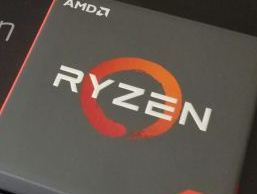 |
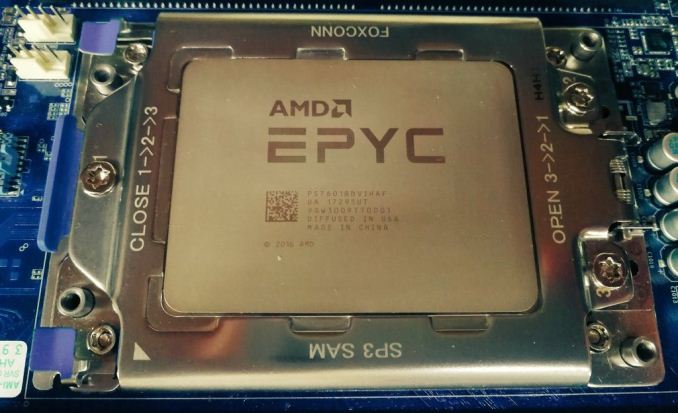 |
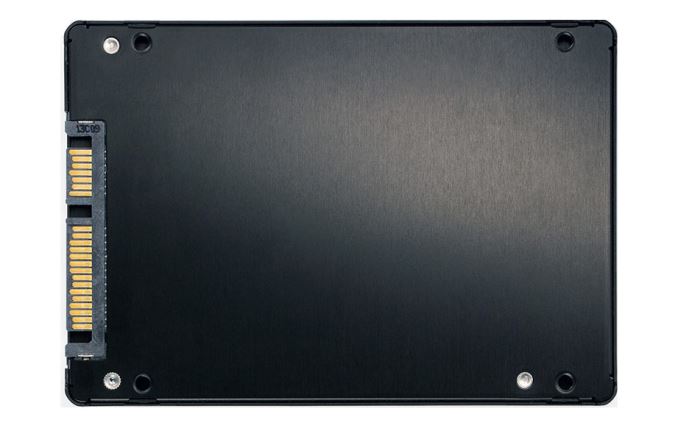 |
 |
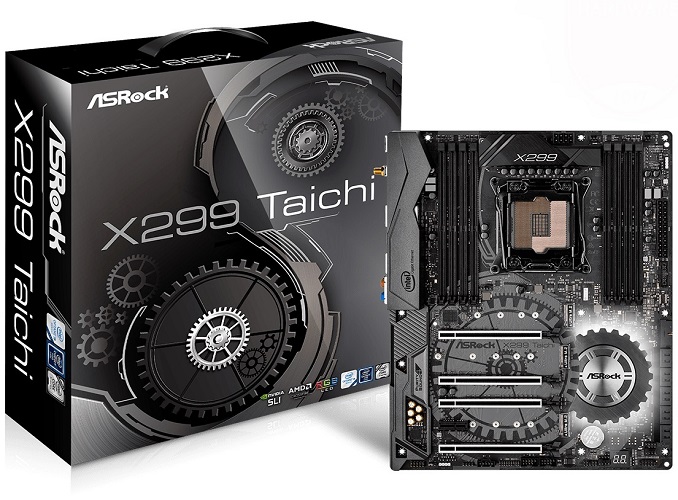 |
| Best Gaming Laptops |
Productivity Laptops |
Best HDDs |
Mechanical Keyboards |
Best Power Supplies |
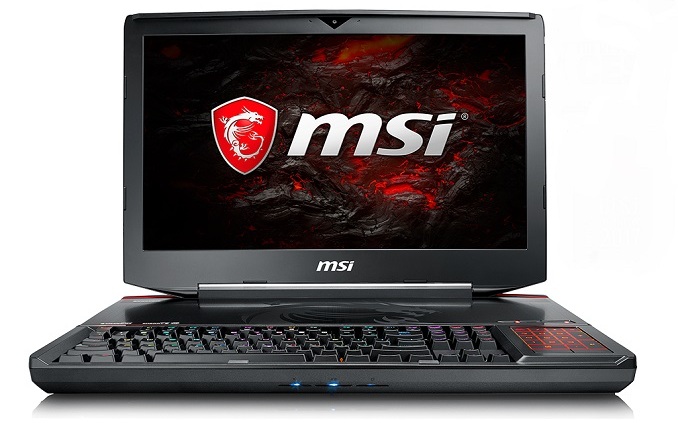 |
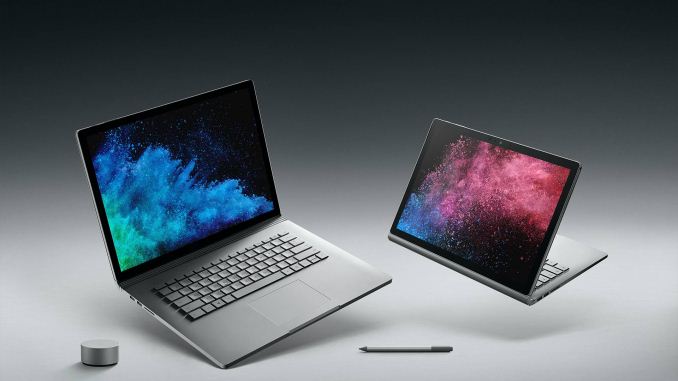 |
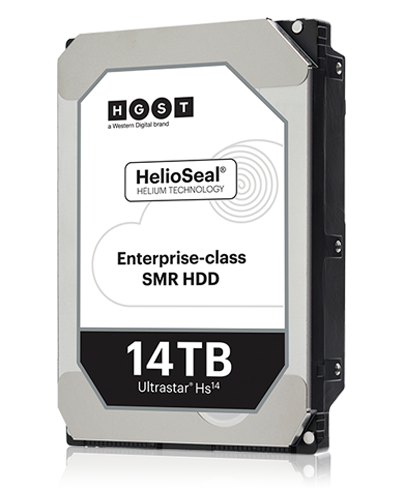 |
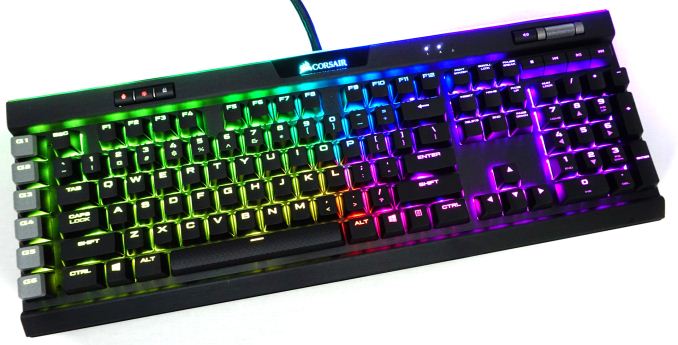 |
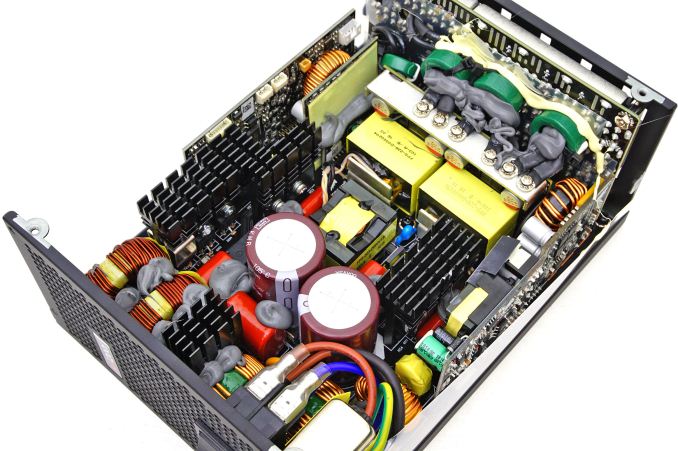 |










86 Comments
View All Comments
ltcommanderdata - Friday, November 24, 2017 - link
"Historically, Intel has never mixed and matched multiple microarchitecture designs in the same generation."That's not exactly accurate. The Core family branding started as a mixed generation with 1st generation Core processors consisting of both 45nm Nehalem microarchitecture and 32nm Westmere microarchitecture processors.
Ian Cutress - Friday, November 24, 2017 - link
That's a fair point. Intel made it confusing with Nehalem being anything from i5-750S up to i7-975, while Westmere was anything under the i5-680 or anything over the i7-970 (except the 975).IGTrading - Friday, November 24, 2017 - link
Thanks for the synthesis Ian.This means that, if there will be no Intel 8-core mainstream CPUs in 2018, we can prepare for an all-AMD year at our company.
Hehe ... that should make the technical solution designs easier :)
Reminds me of the 2000 ~ 2007 period ....
Anyway, I feel like a sinner when I recommend an Intel solution .... it's like supporting that freakishly corrupt corporate monster :)
Vatharian - Sunday, November 26, 2017 - link
They are not corrupt. Intel has no idea what to do - it's far too big, it's lacking consistent vision, and perhaps the most important Intel's problem, is that its current top management haven't ever faced any big challenges - so they all think they are doing great. They are removed from reality, because middle management is blocking possibly critical problems from showing up on reports going up the chain, and they think any problem can be solved by combination of hard work and throwing money at the problem, but not exactly thinking. And last, but not least, they spent last 15 years collecting ambitious and brave directors, managers and engineers... and they are now occupied with chest-thumping, instead of doing something productive.Source: my brother works there.
So, in the end, AMD got it's crap together, and here we have the effect.
Gigaplex - Sunday, November 26, 2017 - link
"They are not corrupt" - VatharianThey were caught illegally damaging AMDs business with the abuse of their monopoly position. That set AMD back during a period where they were more than competitive with Intel, and meant they didn't have the R&D resources to maintain their competitiveness. When Intel finally did pay up, it was too little too late.
Reflex - Monday, November 27, 2017 - link
Not to defend Intel too much, but meh, it was not considered illegal at the time, and it resulted in a settlement in civil court, not criminal convictions so not they were not convicted of the things you mention even if it seems to us that perhaps they should have been.It is basically impossible for a company with as many divisions and moving parts to avoid ever making a mistake. Also, activity that would be seen as legal at one stage, such as Intel doing co-branding bonuses with OEM's, can seem predatory at another, such as when they had a valid competitor and their marketshare had crossed 90%. The rules change, and its not always obvious when it happens.
Kevin G - Saturday, November 25, 2017 - link
It didn't help that Lynnfield (45 nm) coexisted with Westmere (32 nm CPU + 45 nm chipset) int the same LGA 1156 socket. There was also Havendale (45 nm CPU + 45 nm chipset) that never shipped, though it was sampled around to OEMs.To further confusion, Intel markets Kaby Lake as a new generation but it is just an advanced stepping of Sky Lake for all intents and purposes.
ajp_anton - Saturday, November 25, 2017 - link
So your chart should be:Microarch. Core gen Advertised gen
Nehalem 1st 1st
Westmere 2nd 1st
Sandy Bridge 3rd 2nd
Ivy Bridge 4th 3rd
Haswell 5th 4th
Haswell Ref 5th 4th
Broadwell 6th 5th
Skylake 7th 6th
Kaby Lake 7th 7th
Kaby Lake Ref 7th 8th
Coffee Lake 7th 8th
Cannon Lake ? 8th
Ice Lake ? 9th
ajp_anton - Saturday, November 25, 2017 - link
So your chart should be:Microarch. Core gen Advertised gen
Nehalem 1st 1st
Westmere 2nd 1st
Sandy Bridge 3rd 2nd
Ivy Bridge 4th 3rd
Haswell 5th 4th
Haswell Ref 5th 4th
Broadwell 6th 5th
Skylake 7th 6th
Kaby Lake 7th 7th
Kaby Lake Ref 7th 8th
Coffee Lake 7th 8th
Cannon Lake ? 8th
Ice Lake ? 9th
mapesdhs - Monday, November 27, 2017 - link
Ian, I'm assuming you meant Westmere was anything under or including the i5 680 (since the 680 is just a faster 670 as far as I can tell from the specs), but the product naming refers to those i5s as Clarkdale. Funny, I hadn't noticed before that Clarkdale was 32nm while the i5 760 Lynnfield, etc. were 45nm. No wonder the Clarkdales oc so easily, running an i3 550 at 4.7 is trivial; I picked up a 680, hoping to get it over 5.0 just for giggles.